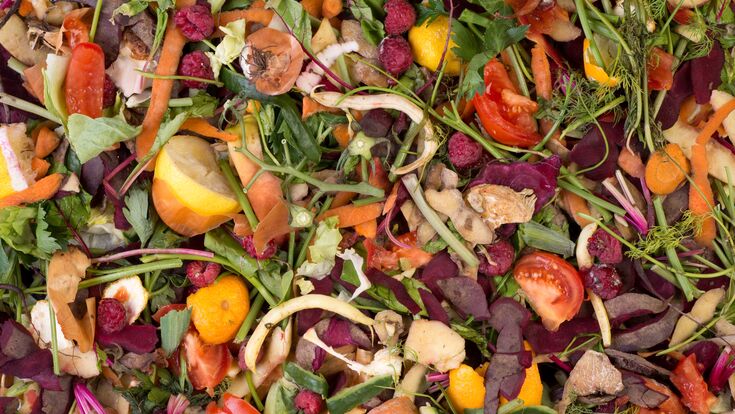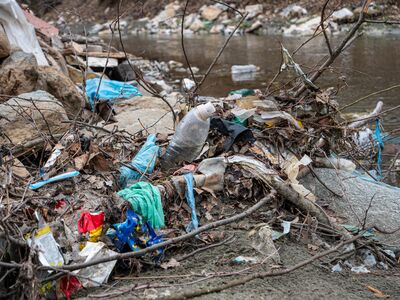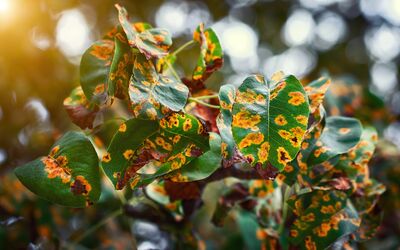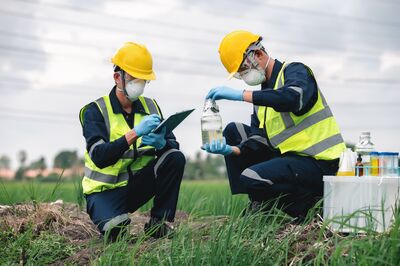Biowaste : Assessing the Impact of ISWA’s Practitioner’s Guide to Preventing and Managing Contamination in Organic Waste

The circular economy of organic waste starts with the soils responsible for growing agricultural products that sustain our cities. These soils then become the ultimate recipients of high-quality compost or digestate made out of organic waste. To ensure the utmost effectiveness, it is essential to minimise contamination, optimise product quality and enhance the efficiency and economic viability of organic waste recycling processes.
As contamination threatens to undermine the viability of many composting and anaerobic digestion schemes, guidance on how to prevent and manage contaminants was urgently needed. In response, ISWA’s Working Group on the Biological Treatment of Waste (WGBTW) reviewed this topic, culminating with the publication of the Practitioner’s Guide to Preventing and Managing Contaminants in Organic Waste, Compost and Digestate in 2023. It was a collaborative effort involving a number of working group members, each contributing information and insight. Launched at the annual congress in Oman in October, the Guide received considerable attention, with the first fifty printed copies being taken within the hour.
Related article: Why - and how - biowaste should be collected separately
So, why the interest?
Contamination of any material destined for recycling not only reduces the system’s efficiency and effectiveness, but also its economic viability. The costs of removing and disposing of contaminants has been poorly researched to date; however, data from Italy and the UK indicated that removal and disposal costs were in the region of EURO 150 to 230 per metric tonne of contaminants. These estimates are between 2-to-4 times higher than the gate fee for organic waste levied by many recycling facilities in the EU. Furthermore, data from a study at a low-tech composting facility in Malawi suggested that the labour associated with removing plastics amounted to just over 12% of active labour time. These costs are significant and unnecessary.
So, what is a contaminant?
This question should have been a simple task to answer; however, scrutiny of the literature revealed that there was no unified definition, leaving the working group to develop its own (see box). Overall, there are three broad categories of contaminants: physical, chemical and biological, although there is some overlap between all three. This functional categorisation enables us to consider their source and determine the steps necessary to remove them or reduce their concentration.
Types of contaminant
Definition of a contaminant: An undesirable item, substance or biological material in organic waste and/or its recycled product that has the potential to adversely affect the recycling process and/or the recycled end product(s) (i.e. compost or anaerobic digestate).
Physical contaminants are generally large, visible items such as plastics, metal items, glass and stones. Plastic film is the commonest contaminant in this category, mainly coming from thin-gauge polyethylene bags. These are particularly problematic to remove at the start of the process due to the high moisture content of some wastes. Current removal techniques, such as trommel screens, work well with dry materials but are much less effective with wet wastes. Most operators therefore remove lightweight plastics at the end of the process using trommel screens and wind sifters when moisture levels have dropped; however, fragmentation of the film during processing can mean that a single bag entering a plant can be shredded into many tiny fragments, which can be just as difficult to remove. These practical problems led ISWA to call on equipment suppliers to invest in research and development to improve contaminant removal techniques, whilst minimising the concomitant loss of organic matter (the ‘dragging effect’); see the ‘Call to Action’ text box.

Biological contaminants occur naturally and are often intrinsic parts of some organic wastes. They include, for example, bacterial and fungal pathogens, weeds, seeds and propagules, plant toxins and genetic material that may confer resistance to some antimicrobial pharmaceuticals. They are usually destroyed or reduced to acceptable levels through good management practices, including maintaining time-temperature profiles or introducing a pasteurisation step at anaerobic digestion plants.

Chemical contaminants include both organic and inorganic chemicals derived from natural and man-made sources. Examples include pesticides and persistent organic pollutants, as well as heavy metals that occur naturally in the environment but can be concentrated in man-made products such as batteries and waste electrical and electronic equipment. Recently there has been considerable publicity about so-called ‘forever chemicals’, in particular per- and polyfluoroalkyl substances (PFAS). These are now being associated with adverse health effects in humans and are known to concentrate up the food chain (in a similar way to pesticides, such as DDT, did in the 1950s and 60s). Unfortunately, PFAS are used in a wide variety of applications, such as food service packaging, so there is potential for them to migrate into the food we eat, hence end up in food waste. Whilst this is principally an issue for regulators concerning the quality of food and use of these chemicals, PFAS in compost and digestate has been problematic in some parts of the world because of the perceived risk they present to human health and the environment.

So, how can we address the issue?
The Dutch philosopher Erasmus is attributed as the source of the saying ‘prevention is better than cure’. This principle is as relevant to contaminants in organic waste streams as it is in other areas of waste recycling. The working group considered this and developed a hierarchy of options, with the most desirable at the top and the least desirable at the bottom (see figure). This concept has been used by the organics recycling sector to convey the principles of preventing contamination, in particular, through source separation. A few months after publication of the Guide, it was used in a presentation by the UK’s Association for Renewable Energy and Clean Technology at a food waste conference in London.
How to reduce it?
In addition to technical information, the Guide also provides examples of ways in which contamination can be reduced, with the three most effective solutions relating to source separation schemes and communication campaigns.
Source separation requires waste generators to sort their organic waste at the point of disposal. This practice minimises contamination by ensuring that organic materials are kept separate from non-organic waste. It also enhances recovery rates for composting and anaerobic digestion processes and significantly improves the quality of the end products.
Well-thought-out communication campaigns aim to educate the public about the importance of separating organic waste and provide clear instructions on how to do it. Consistent and recognisable messaging (such as colour-coded bins) helps reinforce proper practices among residents and businesses. When people understand what materials belong in which bin, they are more likely to comply with source separation guidelines.
Learning by doing?
The final section of the Guide provides examples of how some organic waste recycling facilities manage and remove contaminants, outlining specific steps for eliminating or diverting contaminants from the main process flow. It provides information on a plant composting food and garden waste, a biogas facility utilising dry anaerobic digestion, and two plants that combine anaerobic digestion (AD) with composting using wet anaerobic digestion. Diagrams estimating the quantity of contaminants diverted at various process steps are provided for each facility.
The Practitioner’s Guide was translated into Spanish with the kind support of ARS Asociación para el Estudio de los Residuos Sólidos, ISWA’s national member for Argentina.
The Spanish version was launched in April 2024 in Guadalajara at a dedicated event during the Ecomondo Mexico fair. The presentation attracted considerable interest from participants consisting of Mexican waste experts, public administrators and several composting plant operators.
A copy of the Guide was handed over by Marco Ricci, one of the lead authors of the Guide, to the technical director of the BioVerdeMex composting plant, a company deeply committed to minimising contaminants in its products; the plant produces quality soil improvers used in several agricultural sectors in the state of Jalisco, Mexico.
A global issue to address
As the spotlight now falls on the correct management of the organic fraction of municipal solid waste in order to reduce fugitive methane emissions caused by inappropriate disposal, the onus falls on the waste management sector, public and private enterprises and individuals to separate organics at source for recycling. We hope that this Guide will provide practical, relevant information for policymakers and practitioners alike.
The Guide can be downloaded free of charge from the ISWA website.
Jane and Marco are grateful to contributions from the following working group members: Percy Foster, Foster Environmental, Ireland; Mathias Hartel, Fachverband Biogas e.V., Germany; Lukas Heer, Hitachi Zosen Inova AG, Switzerland; Haniyeh Jalalipour, Universität Rostock, Germany; Jennifer McDonnell, NYC Department of Sanitation, USA, and Cristián Mulcahy, Compost Systems, Spain.






